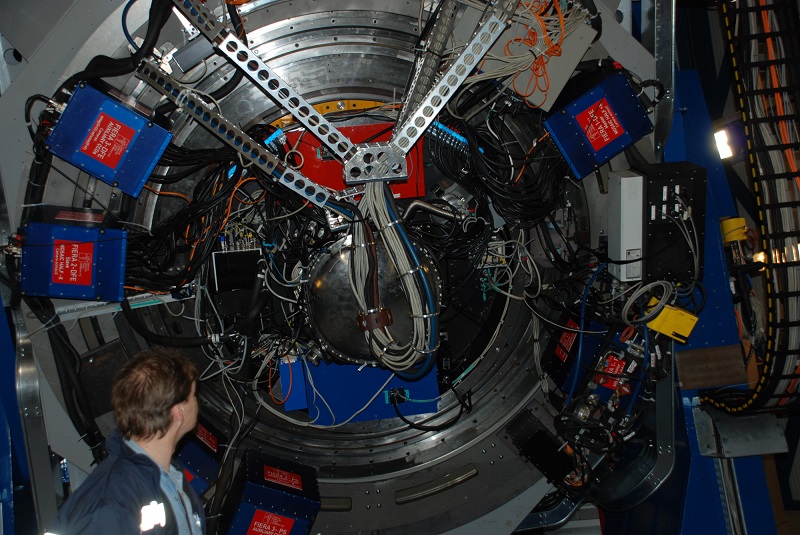Groningen astronomers take three large near-Earth objects off the risk list
A team of astronomers at the University of Groningen have shown that three large astroids that were considered potentially dangerous pose no risk of impact in the coming 100 years. They arrived at this conclusion after researching telescope archives with the help of advanced data science techniques.

Near-Earth objects (NEOs) are astroids that come close to Earth. NASA and the European Space Agency (ESA) have compiled a list of around 1,350 dangerous NEOs that could potentially impact Earth within 100 years. To monitor the NEOs, the space agencies use special telescopes.
The researchers at the University of Groningen (UG) considered the list of dangerous NEOs on the basis of hundreds of thousands of photos taken by the European VLT Survey Telescope in Chile. The telescope comprises a 268-megapixel wide-angle camera weighing 700 kilograms, called OmegaCAM, that was developed under Dutch leadership. This camera is often able to take photos deeper and further into space than the official telescopes developed to study NEOs.

Groningen Computing Centre
The hundreds of thousands of images are stored, processed, and analysed with software systems developed in Groningen to keep astronomical data files manageable. The software is run by the UG’s Computing Centre.
Among the archived photos, the astronomers discovered tens of thousands of predominantly non-dangerous candidate astroids. They were also able to re-assesn the trajectory of the three NEOs that were thought to be dangerous until recently more clearly. This revealed that these NEOs are less dangerous than first thought. However, another planetoid seems to be more dangerous than previously thought. It is thankfully very small; just a few metres in diameter.
2019 DP
One example of a NEO that was considered dangerous until recently is the 40-metre in diameter 2019 DP. This NEO was officially discovered in 2019, but the Groningen researchers found it on archived images from 2017. ‘Thanks to these previous images, we were able to re-asses the trajectory of 2019 DP a lot more closely,’ explains lead researcher Teymoor Saifollahi (UG). ‘We now know that 2019 DP will not come as close to Earth as previously thought. NASA and ESA have since removed 2019 DP from the risk list.’
Rees Williams from the Donald Smits Center for Information Technology at the UG adds: ‘This is a good example of how astronomical observations and IT systems have added value for society, too.’
This work was made possible by funds coordinated by the ESA’s Planetary Defence Office. The Big Data Layer of the Target Field Lab project ‘Mining Big Data’ was used. The Target Field Lab is supported by the Northern Netherlands Alliance (SNN) and is financially supported by the European Regional Development Fund. The data science software system AstroWISE runs on powerful databases and computing clusters at the Donald Smits Center of the University of Groningen and is supported, among other parties, by NOVA (the Dutch Research School for Astronomy).
More news
-
15 September 2025
Successful visit to the UG by Rector of Institut Teknologi Bandung
